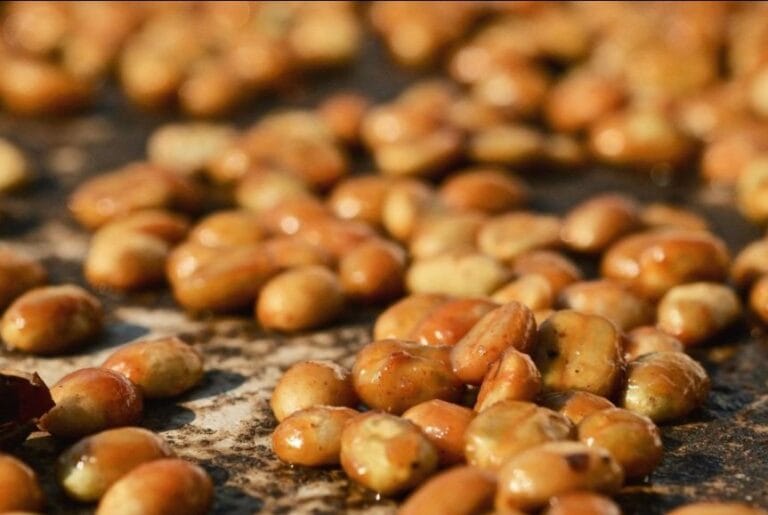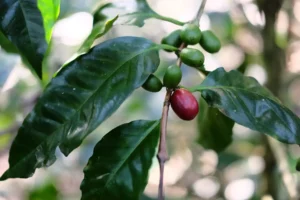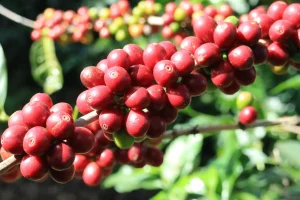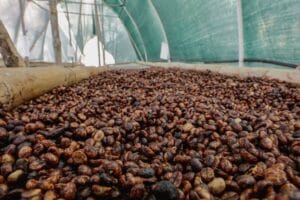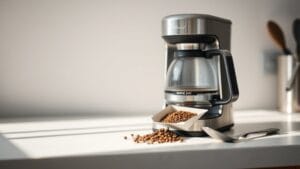Black honey and yellow honey, oh boy, what a flavor showdown! Black honey keeps all that mucilage—up to 100%!—making it super sweet and jammy. It’s like a chocolate party in your mouth! Meanwhile, yellow honey is lighter, with floral notes that say, “I’m sweet, but I’m not trying too hard.” Plus, black honey takes forever to dry and needs a cozy shady spot, while yellow honey is more chill about drying. Intrigued? Stick around for more juicy details!
Key Takeaways
- Black Honey retains 75% to 100% mucilage, resulting in intense sweetness and complex, jammy flavors compared to Yellow Honey’s lighter profile.
- Yellow Honey has a drying time of 8 to 10 days, while Black Honey takes 15 to 20 days due to higher moisture content.
- The processing of Black Honey is labor-intensive, requiring constant monitoring, in contrast to quicker, easier Yellow Honey processing.
- Black Honey’s full-bodied texture contrasts with Yellow Honey’s medium-bodied feel, making it a richer experience in coffee applications.
- Environmental conditions significantly influence flavor profiles, with Black Honey thriving in shady, humid spaces to avoid sourness during drying.
Differences in Mucilage Retention
When diving into the world of honey processing, the differences in mucilage retention between Black Honey and Yellow Honey seriously deserve some spotlight, let me tell you!
Black Honey retains a whopping 75% to 100% of its mucilage, making it a sticky little guy. It takes forever to dry—15 to 20+ days! Talk about a commitment!
Black Honey holds on to 75% to 100% of its mucilage, taking 15 to 20+ days to dry—serious dedication!
Meanwhile, Yellow Honey? Just 25% to 50% mucilage, my friends. It’s speedy, drying in just 8 to 10 days. Imagine comparing black honey process coffee to its yellow counterpart—it’s like the tortoise and the hare!
The high mucilage in Black Honey leads to intense, jammy flavors, while Yellow Honey struts in with a lighter, floral vibe. Varying mucilage percentages in these processing styles really highlight how coffee can have such personality!
Flavor Profiles: Sweetness and Complexity
In the world of coffee, where flavors dance like a caffeinated party, the difference in sweetness and complexity between Black Honey and Yellow Honey is like comparing a wild roller coaster ride to a gentle carousel ride!
- Sweetness: Black honey boasts *very high* sweetness with tons of mucilage making those beans sweeter. Meanwhile, yellow honey is just *high* on the sweetness scale—not quite as intense.
- Complexity: Black honey’s fruity flavors are like a flavor explosion, while yellow honey keeps it *moderate*—more like a light drizzle than a storm!
- Body: Black honey’s full-bodied richness feels like a warm hug; yellow honey is medium-bodied, definitely lighter.
- Mouthfeel: Black honey wraps around your taste buds, while yellow honey dances lightly, keeping it clean and fresh!
Drying Time and Environment Effects
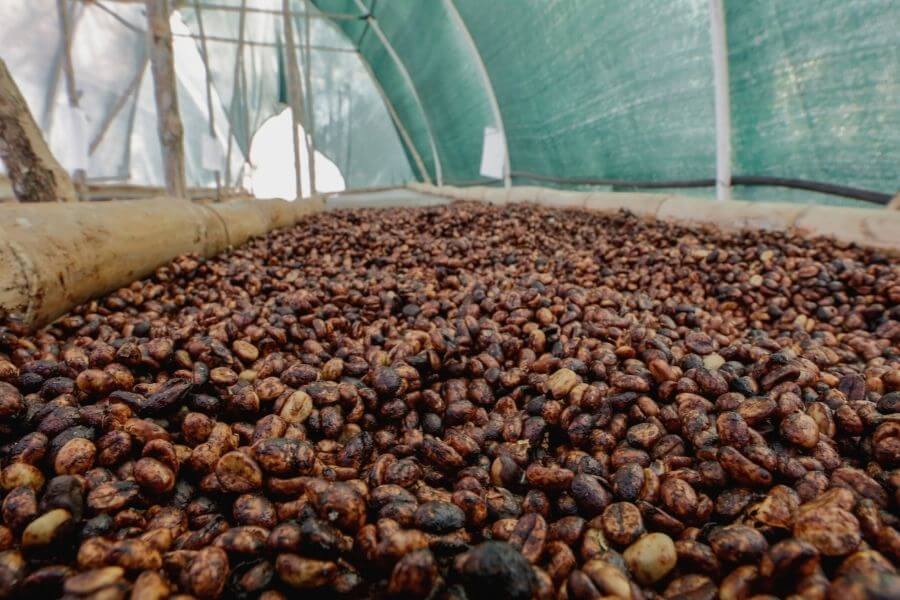
Drying coffee beans can feel like a dramatic race against time, with results that can either make or break the flavor.
Black honey coffee takes a leisurely stroll, often needing twice as long to dry as its speedy yellow honey cousin. Imagine a turtle versus a hare competition, only with more caffeine!
Yellow honey enjoys the sun, zipping through drying in warm, low-humidity spots, while black honey prefers shady retreats—like that friend who can’t stand direct sunlight (we all know one, right?).
But too much humidity is a no-go! Over-fermentation can turn those beans sour faster than you can say “Oops!”
Labor Intensity in Processing Techniques
Labor intensity in coffee processing can feel like a high-stakes game of musical chairs, except the chairs are constantly shifting, and if you don’t stay on your toes, you might end up with a face full of moldy beans!
The level of mucilage left on black versus yellow honey beans causes a wild rollercoaster of labor. Here’s how it shakes out:
- Black honey: labor-intensive with constant monitoring to prevent mold.
- Yellow honey: quicker drying, minimal oversight, fewer risks!
- Red honey: a happy medium, needing some attention but no crazy commitment.
- Drying methods: shade for black equals more labor, but sweet reward!
Juggling these tasks is exhausting, but hey, that’s how we get that sweet sip!
Popularity Among Coffee Enthusiasts
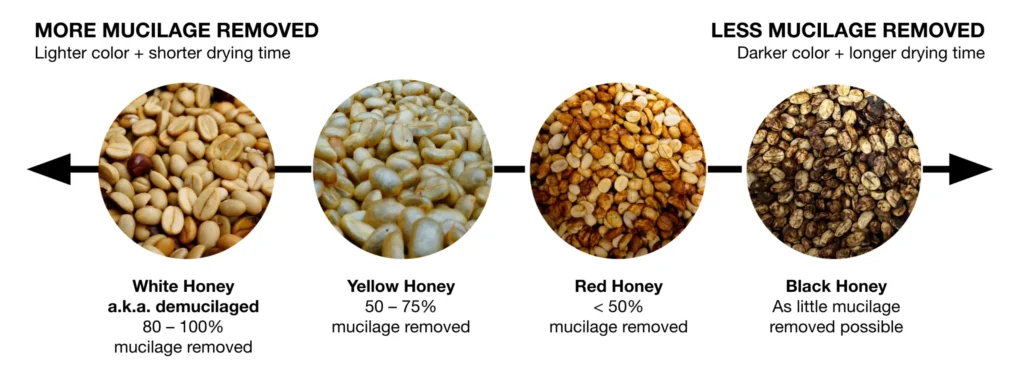
Coffee lovers know that the world of honey processed beans is like a wild trip through flavor town!
Take yellow honey, for instance—perfect for those new to the coffee game. It’s smooth and gentle, like a warm hug on a chilly morning.
But then there’s black honey! Whoa! That’s for bold adventurers on a quest for those intense, fruity flavors. Imagine coffee that practically dances on your taste buds!
And let’s not forget red honey—like a surprise party in your cup! It’s got just the right balance to keep even the pickiest sippers content.
Specialty coffee shops? They’re all about those honey processes now! It’s catchy, trendy, and totally delicious—coffee seekers are loving the buzz!
Sensory and Aromatic Characteristics
Regarding honey, the difference in sensory and aromatic characteristics is nothing short of a wild ride—a true rollercoaster of flavors! Imagine diving into two very different worlds:
- Color: Black honey is dark amber to brown—like treacle! Yellow honey’s all about that bright, cheerful golden glow!
- Aroma: The bold, earthy scent of black honey could knock your socks off, unlike the sweet, gentle floral aroma of yellow honey that just whispers sweet nothings.
- Taste: Black honey: rich and bolder with some spicy undertones! Yellow honey sticks to sweet and smooth, like your grandma’s hugs!
- Expectations: Color and scent can make you think you’re getting one thing when it’s a totally different honey game!
Who knew honey was this complicated? Honey, please!
Production Challenges and Risks
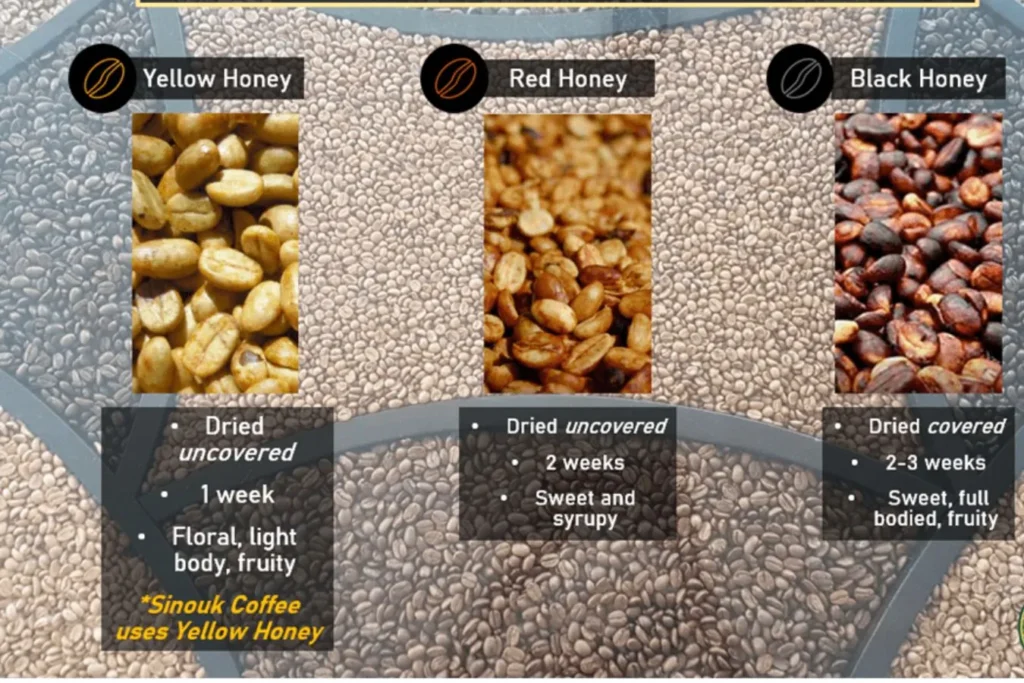
In the domain of producing black and yellow honey, the challenges can feel downright intimidating— it’s like trying to herd cats while juggling flaming torches!
To begin with, climate change? It’s like Mother Nature’s got a bad case of the hiccups— one day it’s a drought, the next it’s a flood, and bees just don’t have time to adapt to these wild mood swings!
And then there’s the Varroa destructor mite; it’s the bee world’s version of a clingy ex— hard to shake off!
Monoculture farming? Ugh, it leaves bees starving, like being stuck at a buffet of broccoli.
Plus, supply chain woes mean beekeepers are running around trying to find equipment while their bees are just like, “Hey, where’s the nectar?”
It’s a sticky situation, for sure!
Color Classification and Its Impact
Color classification in honey—who knew it could be such a wild ride? It’s not just about picking a pretty jar! The coloring can tell you a lot about the honey process and, in the coffee world, the drying conditions.
Here are a few fun tidbits:
- White and yellow honey are lighter thanks to less mucilage and a speedy drying time.
- Red and black honey come from more mucilage, taking longer to dry and turning darker.
- Environmental factors like humidity and sunlight play major roles in color outcomes.
- No strict standards exist; it varies by farm, making every batch a little mystery box!
Suitable Use Cases for Each Coffee Type
When diving into the wonderful world of coffee, it becomes clear that not all brews are created equal—like how some people prefer cats to dogs (and let’s be honest, both can be a handful)!
Now, black honey coffee? It’s a diva that shines in slow tastings—perfect for those moments when you want to sip and swoon over every complex flavor. Think rich desserts, spicy pastries, or even a nice creamy cheese—uh, yum!
Meanwhile, yellow honey coffee plays the reliable best friend, perfect for those on-the-go mornings, pairing well with light breakfasts like fruit salads. It’s like the breezy sidekick, always ready to brighten your day!
How Processing Influences Taste Experience
In regards to coffee, the way it’s processed can totally mess with its flavor—seriously!
Take black honey coffee, for instance; it clings to that sticky mucilage like it’s scared of letting go, which means longer drying times and a wildly complex flavor profile that can taste like a party of fruits in your mouth.
On the flip side, yellow honey coffee is like that friend who rushes through everything, resulting in a bright, clean cup that’s sweet and floral but lacks the deep, rich notes—so basically, imagine a quick sprint versus a slow, luxurious stroll through the coffee landscape!
Mucilage’s Role in Flavor
Mucilage may sound like a fancy term you’d encounter in a science lab, but it actually plays a superstar role regarding the flavor of honey—and trust, it’s not just a sticky situation! This gooey stuff influences everything from sweetness to mouthfeel.
Here’s how mucilage shows off its talents in black versus yellow honey:
- Black Honey retains 75-100% of mucilage, making it rich and syrupy, almost like chocolate syrup, yum!
- Yellow Honey, with only 25-50%, offers a balanced sweetness and floral notes—think of a gentle hug.
- More mucilage means more sugar; it ramps up sweetness like a sugar rush!
- Black Honey’s texture is like a cozy blanket, while Yellow feels more like a light, fun scarf.
Who knew goo could be so amazing?
Drying Conditions Impact Taste
Honey can be a fickle friend, especially regarding how it gets dried. Imagine this: too much moisture and your sweet nectar turns sour, like that leftover pizza that’s been in the fridge too long!
When honey is processed at high temps, it retains more moisture, which is a bit like trying to squeeze a sponge—it just doesn’t work! Lower moisture content thickens things up, delivering those rich flavors folks crave.
But if it’s heated too much, say over 70 °C, watch out! Honey can lose its charm faster than a magician’s rabbit!
Frequently Asked Questions
How Do Black Honey and Yellow Honey Impact Caffeine Content?
Black and yellow honey processing methods do not greatly impact caffeine content in coffee. Variations in caffeine levels primarily arise from coffee bean type and roast level, rather than the honey processing technique employed.
Can Black and Yellow Honey Coffees Be Blended?
Yes, black and yellow honey coffees can be blended. Their contrasting flavor profiles, with yellow honey’s brightness complementing black honey’s richness, enable a harmonious balance when blended, enhancing the complete tasting experience for coffee enthusiasts.
What Regions Produce the Best Black Honey Coffees?
The best black honey coffees are produced in Costa Rica’s Tarrazú and Central Valley regions, the Dominican Republic’s Ramirez Estate, and parts of Nicaragua and El Salvador, all benefiting from ideal climates and sustainable cultivation practices.
Are There Health Benefits Associated With Black Versus Yellow Honey Coffee?
Health benefits associated with black honey coffee include higher antioxidant levels, improved digestive health from increased minerals, and boosted antimicrobial properties. In contrast, yellow honey coffee offers a lighter flavor but potentially fewer nutrients and benefits.
How Can I Brew Black and Yellow Honey Coffees Differently?
To brew black honey coffee, use fine grind and precise pour-over methods, while yellow honey coffee benefits from a medium grind and filter or drip techniques, enhancing their distinct flavor profiles and acidity characteristics.

